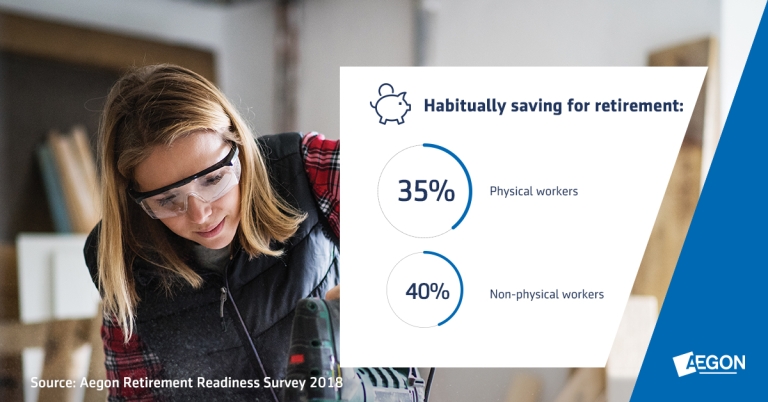Only one in five (21 percent) ‘physical workers’ globally think they are on track to achieve their expected retirement income needs. But a new report by Aegon makes recommendations to improve their retirement readiness.

The unique retirement challenges of workers in physically demanding jobs examines the circumstances among physical workers that can undermine their ability to achieve financial security in retirement.
The report, The unique retirement challenges of workers in physically demanding jobs, is produced by Aegon Center for Longevity and Retirement (ACLR) in collaboration with Transamerica Center for Retirement Studies® (TCRS) and Instituto de Longevidade Mongeral Aegon.
The term physical worker applies to a wide variety of jobs and professions. One thing physical workers have in common is that their jobs involve extensive or sustained periods of intensive physical activity.
"Retirement systems around the world under strain and individuals are being asked to take on additional responsibility to self-fund a greater part of their retirement income. People in physically demanding jobs face the risk of aging out of their occupations before traditional retirement age putting them at risk of not meeting their retirement goals," says Mike Mansfield, Program Director ACLR.
The report finds that:
- Only 35 percent of physical workers say they are always saving for retirement (habitual savers) and 19 percent say they have a written plan (retirement strategists)
- Sixty percent of physical workers believe retirement age should increase to offset the cost of people living longer, yet only 18 percent of physical workers are age over 55
- Eighty-five percent of physical workers say their health in older age is a concern yet they could do more to safeguard their good health such as taking exercise, eating a healthy diet etc.
Recommendations
The report recommends that physical workers should maintain their skills and certifications and develop new skills to keep up to date with changes in the labor market.
"Physical workers should also create a written retirement strategy, featuring regular savings and a 'plan B' in case they unable to continue working in their current jobs until their planned retirement age" says Mansfield.
Employers and governments should do more to help physical workers prepare for and transition into retirement. Obstacles and penalties should be removed for workers who need to retire early due to the physically demanding nature of their work and habitual saving should be encouraged.
No one should be left behind
For the last seven years ACLR has published annual global retirement research reports and themed reports highlighting the situation of particularly vulnerable groups. The simple message running through the whole report series is a need to create greater retirement security for all as traditional systems are under pressure. This is predicated on the belief that no one should be left behind.
Based on a sample of 4,800 physical workers and over 9,900 non-physical workers in 15 countries, this report seeks to answer the following questions: how are physical workers planning and preparing for retirement? How can they extend their working lives, and what obstacles and opportunities can they expect? And, what can be done to help physical workers improvement their retirement security?
